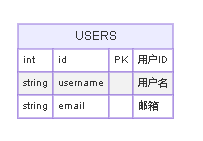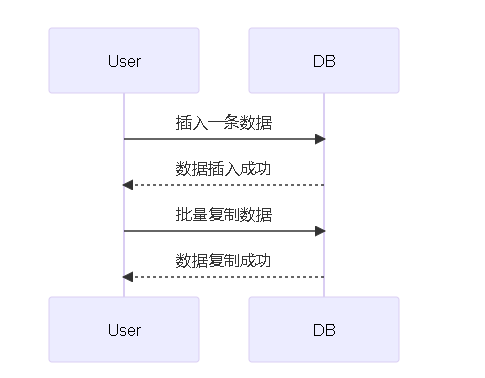在开发数据库应用时,批量操作是一项常见的需求。无论是数据迁移、备份还是更新,理解如何在mysql中批量复制单条数据都至关重要。本文将深入探讨这一过程,并提供代码示例,帮助你更好地理解这一概念。
一. 什么是批量复制?
批量复制是指在数据库中复制若干条记录的操作。与逐条复制不同,批量复制能够高效地完成任务,尤其是在处理大量数据时,能够显著提高性能并节省时间。
二. 关系图
在执行批量复制之前,我们需要设计一个数据表。以下是一个简单的关系图,展示了一张“用户”表:

在这个例子中,“users”表包含三个字段:id、username 和 email。
三. 批量复制的基本步骤
3.1 创建表
首先,我们需要在mysql中创建一个表以供我们测试:
create table users (
id int not null auto_increment primary key,
username varchar(50) not null,
email varchar(100) not null
);3.2 插入数据
插入一条示例数据以供后续复制使用:
insert into users (username, email) values ('alice', 'alice@example.com');
可以通过以下语句确认数据已成功插入:
select * from users;
3.3 批量复制单条数据
在mysql中,批量复制单条数据可以通过insert into select语句来实现。以下是一个示例,显示如何将“用户”表中的一条记录复制多次:
insert into users (username, email) select 'bob', 'bob@example.com' from users where id = 1 limit 5;
上述代码将会把用户名为“bob”、邮箱为“bob@example.com”的记录插入到“users”表中五次。
3.4 确认插入结果
执行以下查询以查看复制结果:
select * from users;
四. 序列图
以下是一个序列图,显示了批量复制数据的基本过程:

此图展示了用户与数据库之间的交互:用户插入数据后,数据库确认插入,再进行批量复制。
五.mysql 复制记录高级版

1. 复制一条记录写入源数据表
insert into table_name select * from a where xx=xx;
示例:
insert into tasks select * from tasks where task_id='f5ef77262f1c467ea9483e29a529bf58';

2. 复制一条记录,然后修改字段值后写入源数据表
2.1 将field1 字段修改为 xiaoming
insert into table_name select 'xiaoming',field2,field3... from a where xx=xx;
示例:
insert into tasks select '123456',job_id,job_type,status from tasks where task_id='f5ef77262f1c467ea9483e29a529bf58';

2.2 将field1 字段修添加后缀
insert into table_name select concat(field1,'-suffix'),field2,field3... from a where xx=xx;
示例:
insert into tasks select concat(task_id,'-preffix'),job_id,job_type,status from tasks where task_id='f5ef77262f1c467ea9483e29a529bf58';

3. 复制一条记录写入其他表
insert into table_name (filed1, field2, field3...) select (filed1, field2, field3...) from a where xxx=xxx;
六. 总结
本文探讨了mysql中批量复制单条数据的方法,提供了具体的代码示例,以及可视化的关系图和序列图。通过上述过程,开发者可以提高效率,减少手动操作带来的错误。
批量操作是现代数据库管理中不可或缺的一部分,理解其背后的原理和使用方法,将大大提升你的开发能力和工作效率。希望你能在今后的应用中,将这一知识运用得当,达到高效管理数据库的目标!







发表评论